Police have 'explanation' over Anglesey bird deaths mystery
- Published
"It's as if they just dropped down dead from the sky"
Police believe they know what killed hundreds of starlings and said a similar incident occurred at the same spot about 12 years ago.
About 225 starlings were found with blood on their bodies on an Anglesey lane on Tuesday afternoon.
Dafydd Edwards, whose partner found the birds, said it was as if "they had dropped down dead from the sky".
PC Dewi Evans told BBC Radio 4: "We have actually been developing an explanation for what happened."
"It's a rational explanation, but we're not going to be revealing what we think the explanation is until such time as the investigation's complete," PC Evans, from North Wales Police's Rural Crime Team, said.
He said people had contacted the force with "all sorts of weird and wonderful theories".
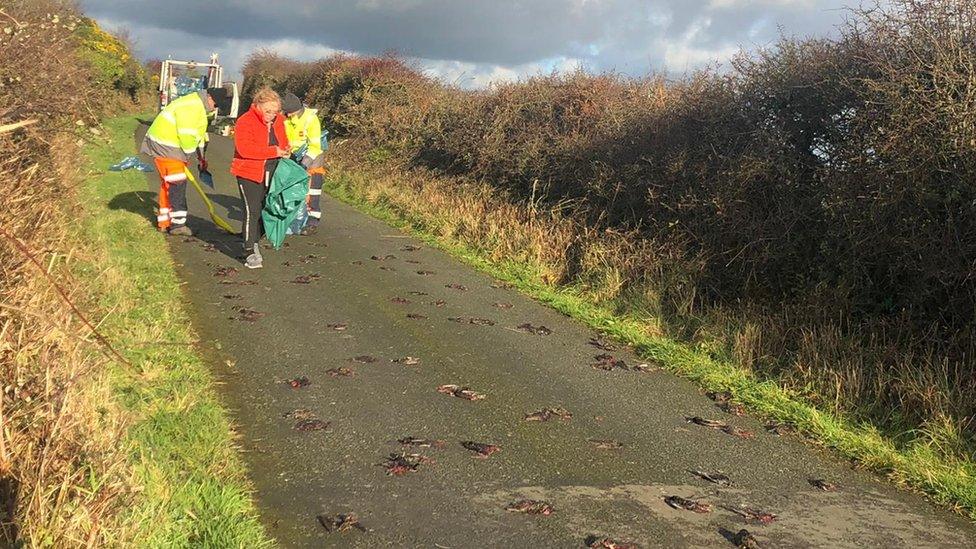
The birds were collected for testing
"It's interesting because when you do research on this phenomenon... it seems to have happened on many occasions in the past.
"But what's particularly strange, if you will, about this case is that it seems that this exact phenomenon happened in the same spot about 12 years ago."
Mr Edwards, 41, said his partner Hannah Stevens first saw the birds alive as she went to an appointment.
"She said she saw hundreds of them flying over and thought it looked amazing but on her way back around an hour later they were all dead in the road."

What are starlings?
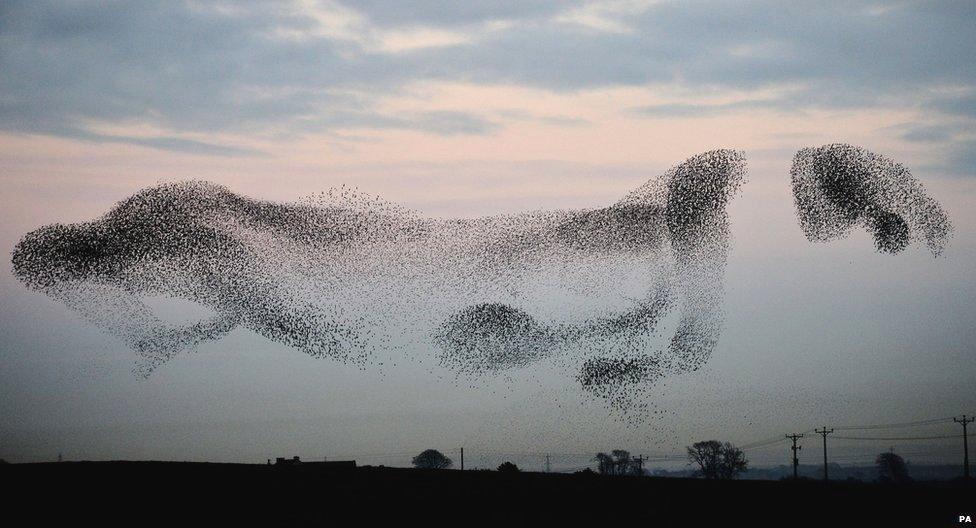
Starling murmurations can be seen every year in the UK, from around October to February
Smaller than blackbirds, with a short tail, pointed head, triangular wings, starlings look black at a distance but when seen closer they are very glossy with a sheen of purples and greens
Noisy birds, starlings spend a lot of the year in flocks
They usually lay 4-6 eggs in mid-April
Starlings are very tenacious and adaptable birds
Over the centuries they have expanded their numbers and range in the wake of farmers, wherever suitable conditions became available. They used to be uncommon birds in the UK
Starling numbers have declined markedly across much of northern Europe and the UK. The decline in the UK started during the early 1980s and has continued ever since
Long-term monitoring shows starling numbers have fallen by 66% in Britain since the mid-1970s
Source: RSPB, external

The Animal and Plant Health Agency collected them for testing and will examine whether they could have been poisoned.
A spokesman for the RSPB said on Wednesday: "This is obviously very concerning for us and we will await the test results.
"It would be inappropriate for us to speculate as to how they have died."
- Published11 December 2019
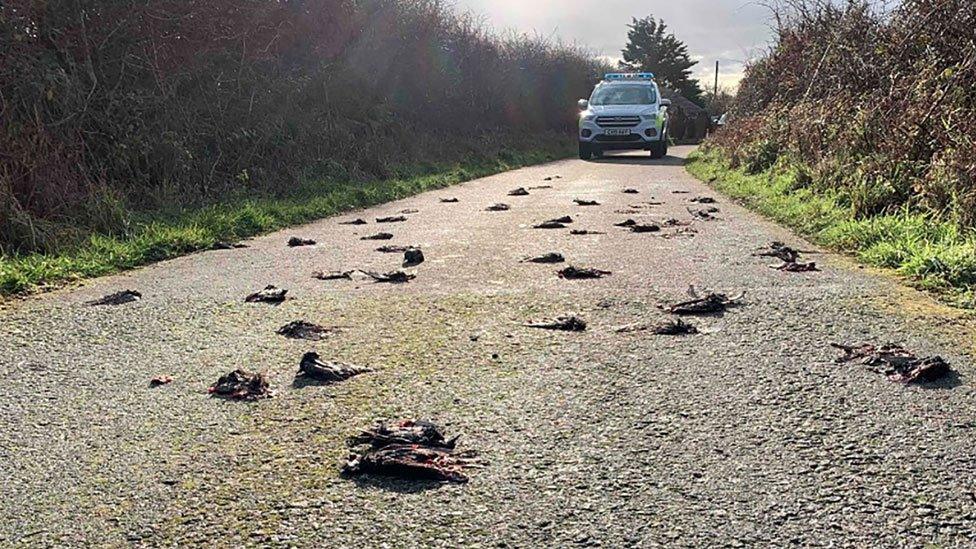
- Published9 December 2019
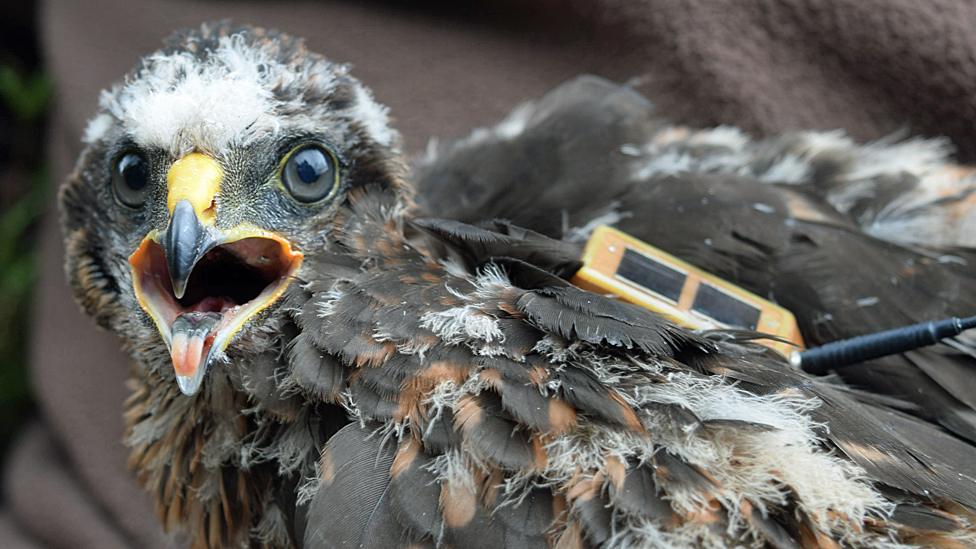
- Published11 July 2019
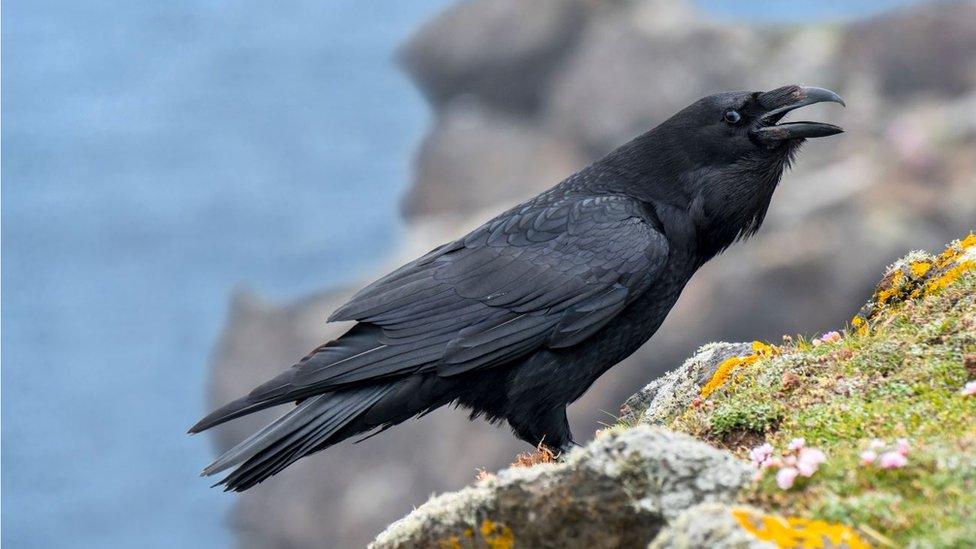
- Published20 December 2018
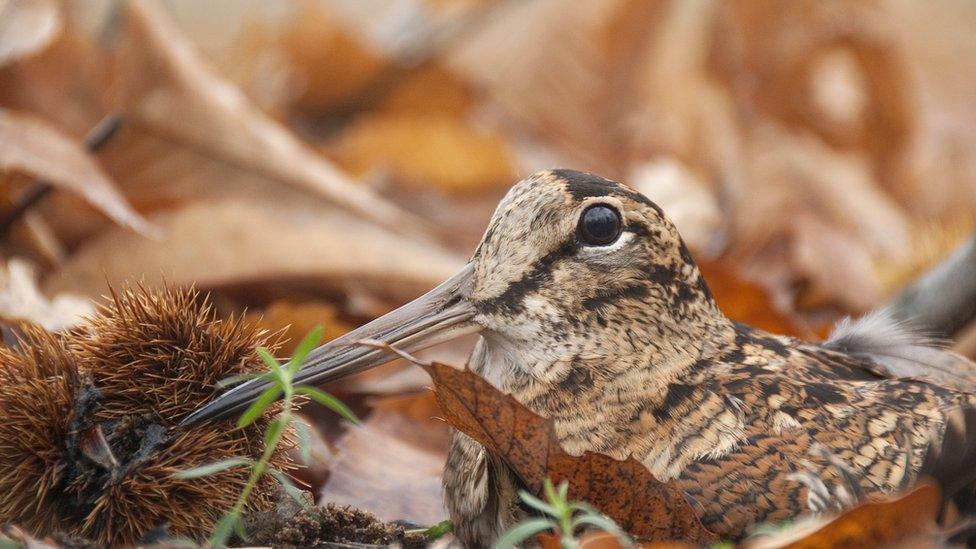
- Published5 January 2011